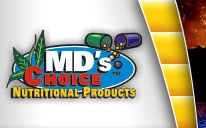Vitamins
![]()
| Vitamin B2 (Riboflavin) |
Chemistry
Metabolism
Metabolic role of riboflavin
Excretion of riboflavin
Sources of riboflavin
Requirements
Deficiency symptoms
Toxicity
- Riboflavin contains D ribose. The name comes from Ribo (ribose) and flavin (flavus-Latin for yellow)
- Structure (see figure 9.15 from Groff, J.L., S.S. Gropper, and S.M. Hunt 1995. Advanced Nutrition and Human Metabolism. West Publ. Co., St. Paul, MN)
- Physical properties
- Yellow to orange yellow crystalline powder
- Slightly soluble in water, dilute acids, and alcohol. Soluble in alkaline solutions but subject to destruction
- Stable in dry form
- Unstable in light, forms lumiflavin or lumichrome
- Absorption and transport
- Riboflavin in foods attached to protein or as FAD, FMN, and riboflavin phosphate must be freed prior to absorption
- HCL or intestinal enzymatic hydrolysis of protein
- FAD FAD pyrophosphatase® FMN FMN phosphatase® riboflavin in intestines
- Free riboflavin is absorbed via a saturable, Na-dependent carrier mechanism primarily in proximal small intestine
- Absorption requires ATP
- Absorption rate is proportional to dose up to approximately 25 mg/day
- On absorption into mucosal cells, riboflavin is phosphorylated into FMN
- Catalyzed by flavokinase
- Requires ATP
- At serosal surface, FMN is dephosphorylated to riboflavin which enters the portal system
- Riboflavin is carried to the liver where it is converted to its coenzyme derivatives (see figure 9.15 from Groff et al. 1995)
- Riboflavin, FMN, and FAD are transported in the plasma by a variety of proteins
- Albumin (primary transport protein)
- Fibrinogen
- Globulins (principally immunoglobulins)
- Most of flavins in plasma are found as riboflavin rather than its coenzyme forms
- Free riboflavin crosses cell membranes in tile tissues by a carrier - mediated process
- Within the cell, riboflavin is converted to its coenzyme forms by flavokinase and FAD synthetase
- A high-affinity transport system for riboflavin coenzymes may exist in the brain
- Concentration of FAD in the brain is maintained even in severe riboflavin deficiency
- FMN and FAD function as prosthetic groups for enzymes involved in oxidation reductions (flavoproteins)
- Riboflavin in foods attached to protein or as FAD, FMN, and riboflavin phosphate must be freed prior to absorption
III. Metabolic role of riboflavin
- FMN and FAD function as cofactors for a wide variety of oxidative enzyme systems
- Act as oxidizing agents because of their ability to accept a pair of hydrogen atoms
- Isoalloxazine ring is reduced by two successive one-electron transfers
- FMNH2 and FADH2 are cofactors for reduced forms of the flavoprotein
- Roles of flavoproteins in intermediary metabolism
- Oxidative decarboxylation of pyruvate and a-ketoglutarate
- Succinic dehydrogenase removes electrons from succinate to form fumarate
- The electrons are passed into the electron transport chain via coenzyme Q
- Fatty acyl CoA dehydrogenase require FAD in fatty acid oxidation
- As a coenzyme for xanthine oxidase, FAD transfers electrons directly to oxygen
- The enzyme contains FAD, Fe, and Mo
- It converts hypo xanthine to xanthine to uric acid
- Aldehyde oxidase uses FAD to oxidize aldehydes
- Pyridoxal (vitamin B6) ® pyridoxic acid (excreted)
- Retinal (vitamin A) ® retinoic acid
- Pyridoxine phosphate oxidase which converts pyridoxamine phosphate and pyridoxine phosphate to pyridoxal phosphate (primary coenzyme form of vitamin B6 is dependent on FMN
- Synthesis of an active form of folate, N5 methyl tetrahydrofolate, requires FADH2
- Enzymes for choline catabolism require FAD
- Choline dehydrogenase
- Dimethylglycine dehydrogenase
- Metabolism of some amines requires FAD-dependent monoamine oxidase
- Dopamine
- Tyramine
- Histamine
- Reduction of GSSG to GSH is dependent on FAD-dependent glutathione reductase
- Urine is the primary route and is dependent on circulating levels; bile is a secondary route
- Main excretory product is free riboflavin
- Orally administered riboflavin appears in urine within hours
- Food sources:
Best Good Fair Milk
Egg white
Liver
Heart
Green vegetablesBeef
Veal
Poultry
Apricot
Tomato
YeastFish
Legumes
Unenriched grains - Feed sources:
- Alfalfa
- Other green leafy forages
- Certain meat byproducts
- Oil meals
- Whey
- Requirement appears to be related to energy intake
- Physiologic factors, chronic disorders, and drugs which increase likelihood of deficiency
- Congenital heart disease
- Some cancers
- Thyroid disease
- Diabetes mellitus
- Trauma
- Stress
- Oral contraceptives
- Mg/kg DM in livestock feed:
Species Growth Reproduction Pig
Chick
Turkey2.3 - 3
1.8 - 3.6
3.63.4 - 4.1
3.8
3.8 - RDA for human is 1.5 mg/day, increased during pregnancy and lactation
- Rat – Symmetrical alopecia, dermatitis with serious exudate that can stick eyelids shut, growth failure, cataract formation, corneal opacities, conjunctivitis, vascularization of tile cornea
- Dog – Reduced heart rate, cardiac arrythmia, collapse, coma
- Pig – Reduced growth, corneal opacities and cataracts, dermatitis, thickened skin, crooked and stiff legs, reproductive failure
- Birds – Degeneration of myelin sheath of nerves, "curled-toe paralysis", reduced hatchability
- Human – Originally confused with pellagra
- Oral and facial lesions.
- Outside of the lips and corners of the mouth
- Red and swollen tongue
- Itching dermatitis, scaly, greasy skin
- Conjunctivitis, lacrimation, burning of the eyes, corneal vascularization
- Peripheral nerve dysfunction
- Severe deficiency
- Diminished synthesis of coenzyme form of vitamin B6
- Diminished synthesis of niacin (NAD) from tryplophan
- Oral and facial lesions.
- Toxicity is unlikely
- Bright yellow hair and skin have been observed with large dosages
![]()
Vitamins

For individual consultation or questions about our products, call
1-800-628-0997
Click Here for a Printable Version of This Page
